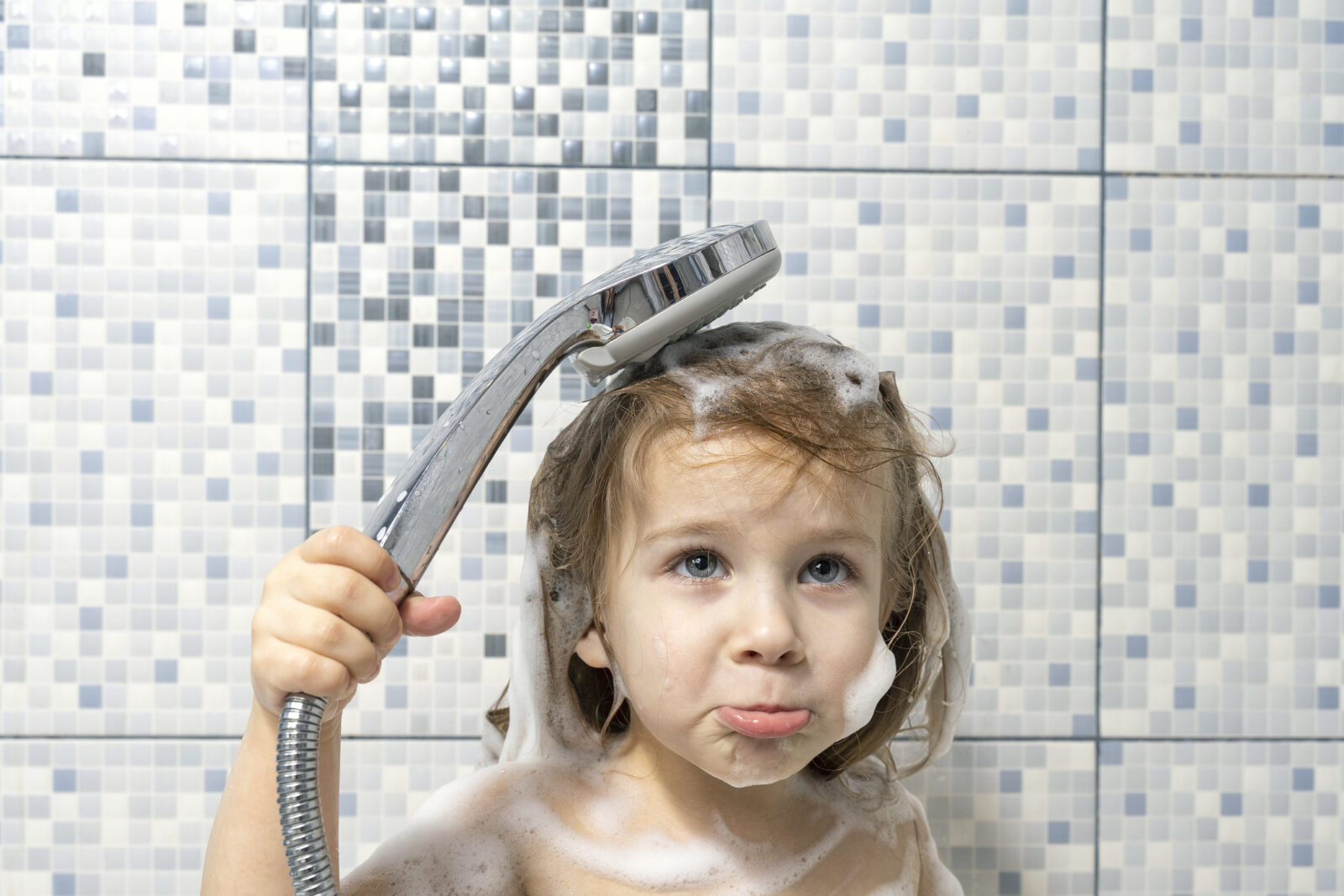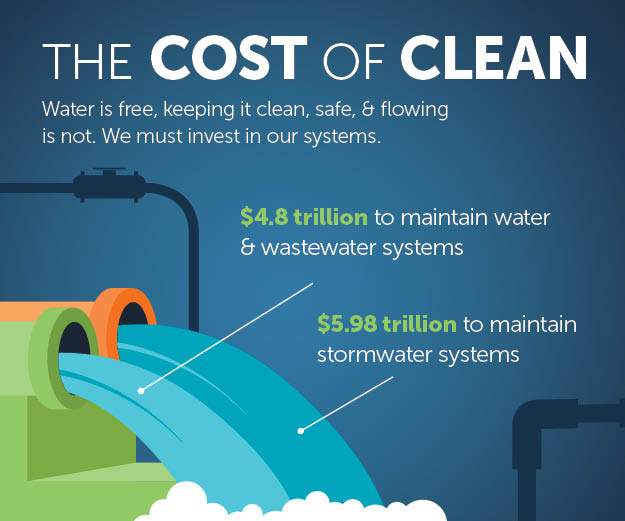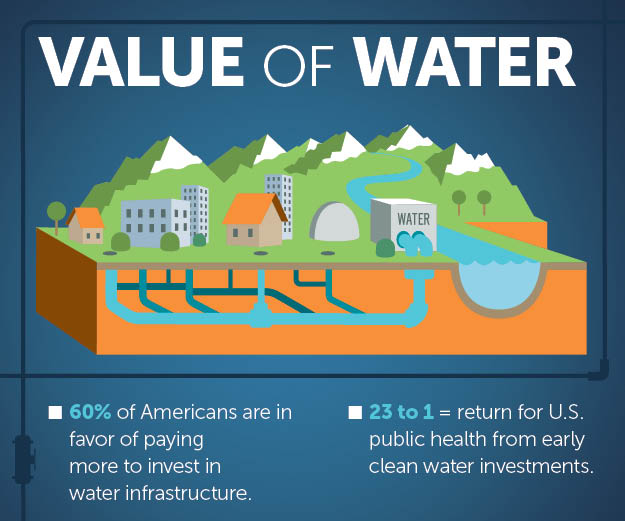This Thursday, Imagine a Day Without Water
 October 21, 2021
October 21, 2021Imagine waking up this morning and having no access to water, anywhere — not at home, at work, or anywhere in between.
That means there’s no coffee or shower. There’s no way to flush the toilet. No way to wash your hands. No water to put in Fido’s bowl.
Now imagine what would happen to hospitals, firefighters, farms, breweries, or the hundreds of industries that depend on water.
Do You Take Water for Granted?

Today, Oct. 21, we Imagine a Day Without Water. It’s a day to learn where your water comes from and where it goes.
- Turn on the tap, and clean water flows out.
- Flush the toilet, and wastewater goes away.
- When you have reliable water service, you don’t have to think about the infrastructure that brings water to your home or business and returns it safely to the environment — but we should.
- Water is essential to public sanitation and health — especially so during a pandemic. Without reliable drinking water and sanitation, Americans would be unable to stay safe and limit the spread.
- In communities with inadequate water and wastewater infrastructure, the public health consequences have been dire.
Water Infrastructure is a Lifeline
- A day without water means firefighters can’t do their jobs, hospitals can’t function, and no one can bathe. Water infrastructure is vital to every household and community.
- Most water systems are more than a century old. As water infrastructure ages and deteriorates, street flooding, water service disruptions, and the resulting damage increases. Each day in the United States, a water main breaks every 2 minutes.
- Extreme weather and climate events, such as drought, hurricanes, storms, flooding, and wildfires are happening more often and are intensifying due to climate change. These disasters overwhelm our aging water infrastructure and can leave communities without reliable access to safe water and wastewater services for days, weeks or months.
- In Allentown, where LCA operates the water and sewer systems and treatment plants under the terms of a lease agreement, we need to repair and replace aging infrastructure — work that is costly and long overdue. Infrastructure in all other parts of our service area requires regular maintenance, rehabilitation, and updates, too.
- Communities need jobs, and families need an income. If the U.S. closes the water infrastructure investment gap, the GDP will grow by $4.5 trillion in 20 years, creating hundreds of thousands of new jobs and raising the household disposable income by more than $2,000 per household.
- There are two million Americans living without safe and reliable water and wastewater services, often relying on bottled water, and potentially living in unsafe and unsanitary conditions. They deserve better.
Securing our Future

Imagine a Day Without Water is an opportunity to share why water is important to you, your business, your community.
- According to the 2021 Annual Value of Water Index, the highest federal priority for voters was ensuring a reliable water supply.
- We can help secure a better future for the millions of Americans who don’t have reliable water service today and the generations to come.
- The 2021 Annual Value of Water Index found water to be a bipartisan issue. Americans across all demographics strongly support water infrastructure investment.
- Together, we can speak with one voice and ask public officials to take responsibility for our water today and tomorrow.
It’s time to #ValueWater, and it’s time to teach our children about the value of water, too. Get the facts by downloading the Economic Benefits of Investing in Water Infrastructure. Parents and teachers can download the Pipe Up! PDF for a number of games that will help show kids how water gets to their house; how they can protect water sources; what’s safe to flush, and more.